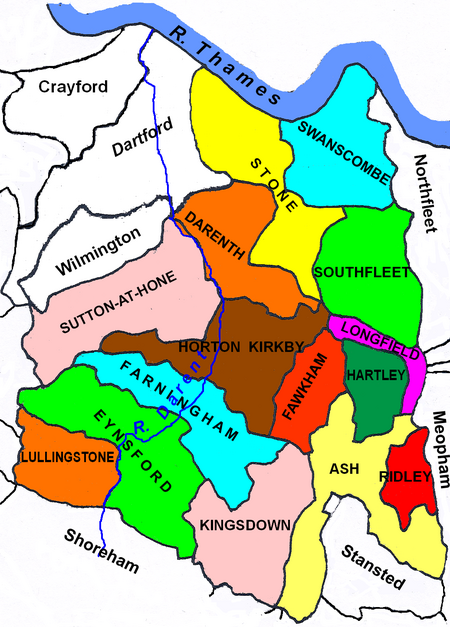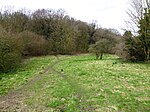Axstane Hundred

Axstane was a hundred in the county of Kent, England. The Hundred of Axstane lay south-east of Dartford and Wilmington Hundred. It is called Achestan in Domesday Book, but by the reign of Edward I it was called Axstane. Its name has been interpreted as referring to an oak bearing stony land, or alternatively a reference to the personal name Acca.In the time of Edward I, the King and the Archbishop of Canterbury were then its lords paramount. In the 20th year of the reign of Edward III (1347, just before the Black Death) this hundred answered for a total of 14.725 knights' fees. Alternative spellings: Achestan (as above), Axston, Axstone, Axtane, AxtonThe hundred included the parishes of Ash Darenth Eynsford Farningham Fawkham Hartley Horton Kirby Longfield Lullingstone Ridley Southfleet Stone Swanscombe Sutton-at-Hone KingsdownThe Hundred of Dartford and Wilmington did not exist at the time of the Norman Conquest, and the parishes of Dartford and Wilmington were accounted as part of Axstane in Domesday Book.The importance of the hundred courts declined from the 17th century, and most of their powers were extinguished with the establishment of county courts in 1867. In 1894 the Hundred was succeeded by Dartford Rural District, which was then created out of the same parishes, with the addition of Wilmington and Crayford.
Excerpt from the Wikipedia article Axstane Hundred (License: CC BY-SA 3.0, Authors, Images).Axstane Hundred
New Barn Road,
Geographical coordinates (GPS) Address Nearby Places Show on map
Geographical coordinates (GPS)
| Latitude | Longitude |
|---|---|
| N 51.39548 ° | E 0.32698 ° |
Address
New Barn Road
New Barn Road
DA3 7JJ , Longfield and New Barn
England, United Kingdom
Open on Google Maps






